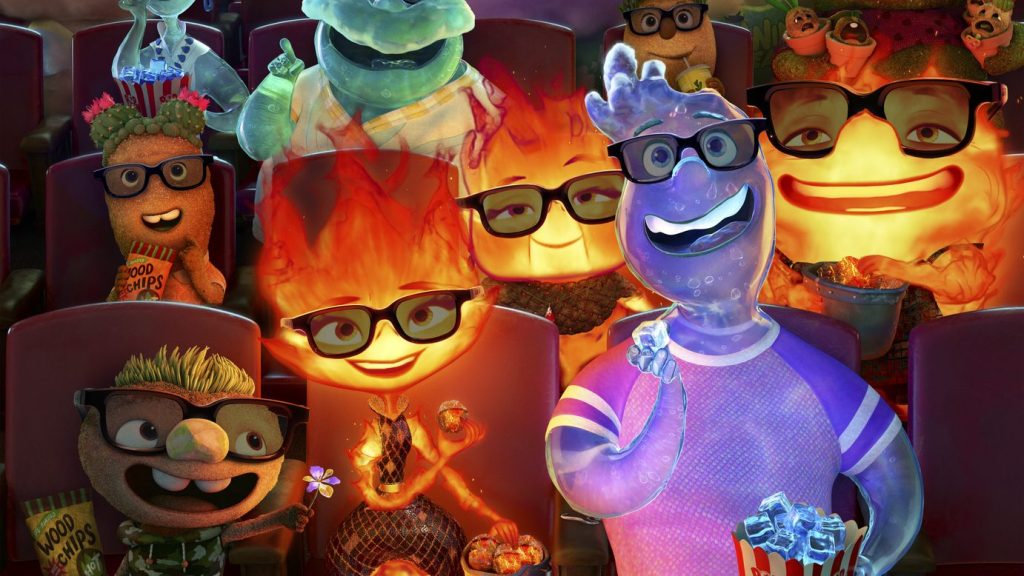In a recent interview with Variety, Pixar’s Chief Creative Officer Pete Docter blamed Elemental’s box office failure on Pixar’s previous streaming releases on Disney+, as well as claims that right now audiences seem “to want the comfort of what they know, which is sequels, and movies based on things.” When asked point blank about sequels to established Pixar franchises like Finding Nemo and The Incredibles, he replied “It’s all fair game.”
While it’s no secret that Pixar’s classic properties have made the company a boatload of money, and that their recent fare of Elemental, Lightyear, and Luca have been underwhelming, this can make it seem like Pixar is indeed running out of magic and that going back to their properties is the best solution. But is that the best way to make more magic? Sooner or later, the creative well is going to run dry if it’s only drawing up the same things.
To those who say that’ll never happen, yeah, I’m sure they said the same about Freddy and Jason back in the 80s. Unfortunately, years of subpar and sometimes downright awful sequels devalued both of those brands, and when they tried to make a comeback in earnest — A Nightmare on Elm Street in 2010 and Friday the 13th in 2009 — they were both dead on arrival. While there were other factors at play here, the fact that neither franchise has been resurrected since is pretty damning evidence. The characters are iconic and will live on forever in pop culture, but sooner or later, audiences tire of seeing the same rehashed drivel slapped up on the screen, no matter the franchise or studio it’s from.
With the lukewarm reception to Toy Story 4 compared to previous entries, as well as the online backlash to the announcement of a forthcoming Toy Story 5, at least one of Pixar’s franchises seems to already be heading that way. Add in the atrocious reception for Cars 3 and you’re already looking down the slippery slope of decline. However, with many film and TV companies — Disney in particular — on the current trend of remaking movies and continually adding to their already established franchises, this still seems like the most viable way to keep making money.
But the way to reignite the Pixar spark and make more magic is going to lie on a much more difficult path — then again, what else would you expect in a kid’s story? The hero never gets to take the easy way out. Taking the “safe bet” isn’t going to be the thing to save the day. The only way that Pixar will be able to save itself as a company is to branch out.
What made Pixar such a valuable company and what made its movies so popular initially was that they were different than other fare being produced at the time. Disney Animation had cornered the market on princesses, heroes, and adventure stories of the fantastical, Don Bluth covered dark and creepy kids’ animation, and experimental animation from other companies like Fox covered the rest of it. Pixar instead decided to focus on the adventures of more mundane things — toys, bugs, fish — and inject them with their own stories and characters, weaving more mature themes into them. The fact that they were also the first company to make a full-length CGI animated movie also helped to give them a boost for a few years until Dreamworks caught up.
There are several legitimate complaints about Pixar’s early years, including a lack of women and minorities both on screen and behind it and a deadlocked fear of ever pushing the status quo and making something that could even possibly offend someone, but in an almost ironic way, these could provide the exact solution to Pixar’s current dilemma.
The best Pixar movies from the last decade — Soul, Coco, Inside Out, Turning Red — have all had women and/or people of color as protagonists. Exploring different cultures like Coco did gives a chance to break into a whole different realm of ideas, and working with more diverse people behind the scenes exposes whole new stories and ways of thinking that might not be the same as that of a white guy who could afford to go to CalArts for a degree. By broadening the scope of what’s offered, Pixar has a chance to do three amazing things at once. First, they can break cultural barriers by showing off different people and different points of view, showing a kid audience that people can be different without it being a bad thing. Second, they can also use this opportunity to further diversify the animation industry as a whole by hiring the people needed to bring these stories to life. Third, by offering something different than what else is on the market now, they can regenerate interest in their brand and pull themselves out of their slump.
Pixar is fully capable of changing their stories while keeping the essence of them the same. Heartfelt, down to earth stories that both kids and grown-ups can enjoy, their movies can still be the definition of wholesome, family fun. But unless they’re willing to follow their own heritage and take a few risks and ruffle a few feathers, they’ll be stuck in a trap of their own making. As Dean Hardscrabble says in Monsters University, the key is to “Keep surprising people.”










